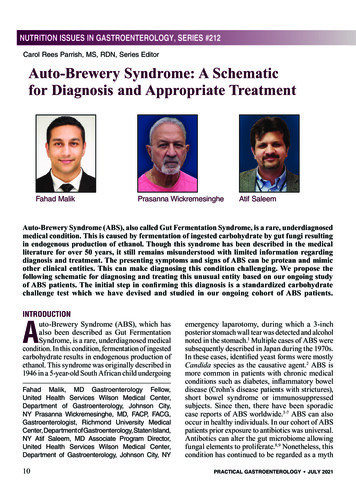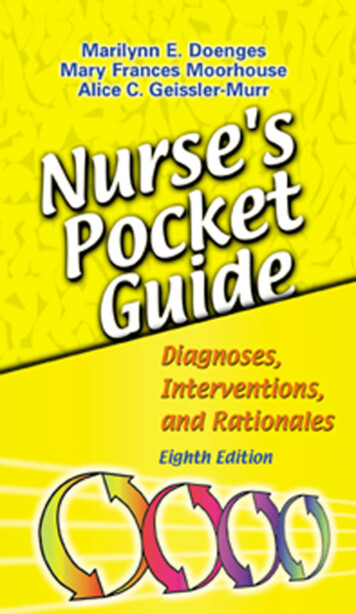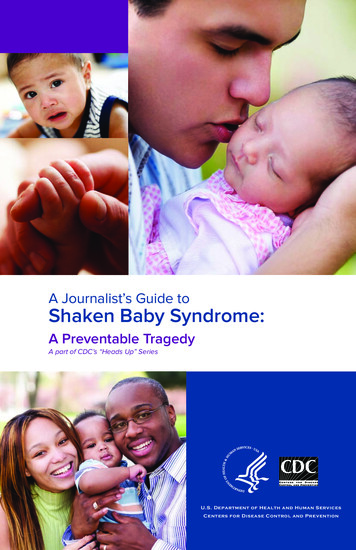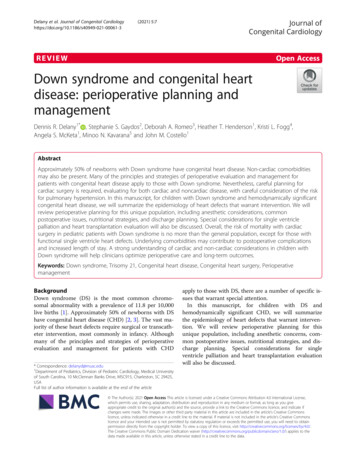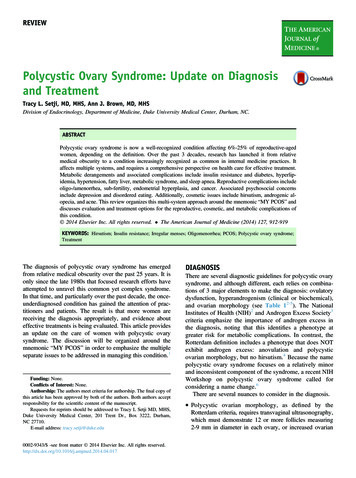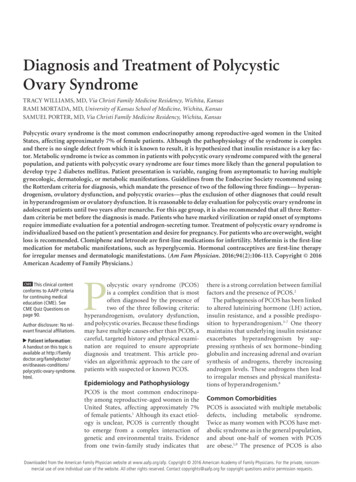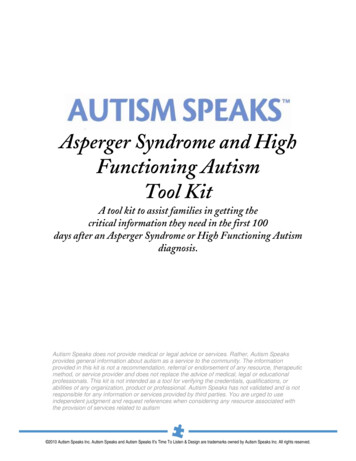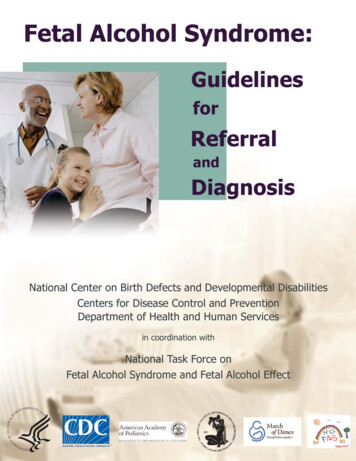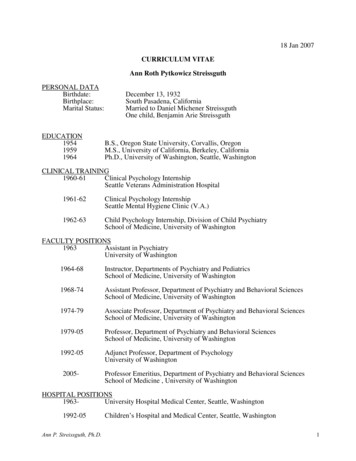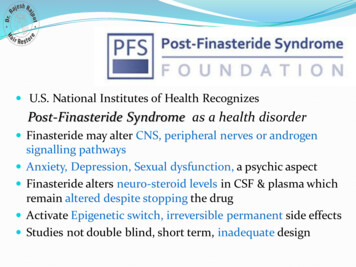
Transcription
U.S. National Institutes of Health RecognizesPost-Finasteride Syndrome as a health disorder Finasteride may alter CNS, peripheral nerves or androgen signalling pathwaysAnxiety, Depression, Sexual dysfunction, a psychic aspectFinasteride alters neuro-steroid levels in CSF & plasma whichremain altered despite stopping the drugActivate Epigenetic switch, irreversible permanent side effectsStudies not double blind, short term, inadequate design
Finasteride not always effective Kaufman KD, Olsen EA, Whiting D, Savin R, DeVillez R, et al. Finasteride in the treatment of men with androgeneticalopecia. Finasteride Male Pattern Hair Loss Study Group. JAm Acad Dermatol, 1998.Improved in hair growth in 48% after 1 yearHair counts in 17% patients were lower than base countsToru Inadomi. Efficacy of Finasteride for Treating Patientswith Androgenetic Alopecia who are Pileous in other Areas: APilot Study in Japan. Indian J Dermatol. 2014 Mar-Apr; 59(2):163–165, 2014.Overall effectiveness of Finasteride reported 59%The quest for more than 59% effective option continues.
Causes for Hair lossStressSmokingPollutionClimatic & SeasonalVariationsAgeingAndrogenicAlopecia(AGA - DHT)Degradation of Extra Cellular MatrixCytokines & Micro Inf lammationSedentaryLife styleAlcohol, Colas,Fast foodDysregulationof Hair Growth CyclesLack ofsleepTrying to Treat all Kinds of Hair losswith Minoxidil & FinasterideHAIR LOSS
Hair loss is Multifactorial 1. Genetic – with family history or epigenetic changes 2. Androgenic – from increased sensitivity despitenormal androgen levels 3. Inflammatory – Micro inflammation from continuedexposure to environmental & lifestyle factors 4. Dysregulation – Hair Growth Cycles, imbalancebetween hair growth promoting & inhibiting factors 5. Nutritional – Iron, Vitamin B12, Vitamin D, Zinc,Selenium, Amino acid, cause hair loss
Micro inflammation Mahe YF, Michelet JF, Billoni N, et al. Androgenetic Alopecia and microinflammation. Int J Dermatol 2000Trüeb RM. Molecular mechanisms of androgeneticalopecia. Exp Gerontol. 2002 Aug-Sep;37(8-9):981-90.Limited success with modulators of androgenmetabolism due to sustained micro inflammation,Trenam CW, Blake DR, Morris CJ. Skin Inflammation:reactive oxygen species and the role of iron. J InvestDermatol 1992Hruza LL, Pentlan AP. Mechanisms of UV-inducedinflammation. J Invest Dermatol 1993; 100: 35-41.
Dysregulation of Hair Growth Kligman AM. Pathologic dynamics of human hair loss.I. Telogen effluvium. Arch Dermatol 1961; 83:175–198. Headington JT. Telogen effluvium: new concepts andreview. Arch. Dermatol 1993; 129:356–363. Whiting DA. Disorders of hair. ACP Medicine. 2006;1-8. Urysiak-Czubatka I, Kmieć ML, Broniarczyk-Dyła G.Assessment of the usefulness of dihydrotestosterone inthe diagnostics of patients with androgeneticalopecia. Advances in Dermatology andAllergology/Postȩpy Dermatologii i Alergologii.2014;31(4):207-215.
Aetiology pathology is unclear Dawber RP. Aetiology and pathophysiology of hair loss.Dermatologica. 1987;175 Suppl 2:23-8 - pathophysiologyof baldness is strictly a misnomer Jahoda CA. Cellular and developmental aspects ofandrogenetic alopecia. Exp Dermatol. 1998 Oct;7(5):23548 - important gaps in current knowledge Ellis JA, Sinclair R, Harrap SB. Androgenetic alopecia:pathogenesis and potential for therapy. Expert Rev MolMed. 2002 Nov 19;4(22):1-11 – need for effective therapiesthat target at a more fundamental level
Hair is a Dynamic Organ High Metabolism,equivalent to Bone Marrow & Intestinal epithelium Rapid cell division for Anagen & sustained growth req. – Nutrients
Role of Nutrition Goette DK, Odum RB. Alopecia in crash dieters. JAMA 1976; 235:2622–2623.Rushton DH, Ramsay ID, James KC, et al. Biochemical andtrichological characterization of diffuse alopecia inwomen. Br J Dermatol. 1990;123:187–97Rushton DH. Nutritional factors and hair loss. Clin ExpDermatol. 2002;27:396–404Harrison and Bergfeld 2009, documented diffuse hair loss incalorie restriction, low fatty acids, crash dieting, starvation,zinc and iron deficiencyAmbooken Betsy, MP Binitha, and S Sarita, Zinc DeficiencyAssociated with Hypothyroidism: An Overlooked Cause ofSevere Alopecia. Int J Trichology. 2013.Zn, Cu, Se, are required for synthesis of thyroid hormones.Hair loss will not improve with thyroxin unless supplementsare added.
Nutrition alters Immunity Kubibidila, S., Yu, L., Ode, D. & Warrier, R. P. The immuneresponse in protein-energy malnutrition and singlenutrient deficiencies. In: Human Nutrition: AComprehensive Treatise, Vol. 8 1993 Confirmed by Trüeb RM. Molecular mechanisms ofandrogenetic alopecia. Exp Gerontol. 2002 Fraker, P. & King, L. Reprogramming of the immunesystem during zinc deficiency. Ann. Rev. Nutr. 2004 Nutritional correction maintains natural immune response
Micronutrients & gene Interaction Thurnham DI. An overview of interactions betweenmicronutrients and of micronutrients with drugs, genes andimmune mechanisms. Nutr Res Rev. 2004 Dec;17(2):211-40.Lifestyle, smoking, alcohol & tea. Eugenio Mocchegiani , Laura Costarelli, Robertina Giacconi,Francesco Piacenza, Andrea Basso, Marco Malavolta.Micronutrient (Zn, Cu, Fe)–gene interactions in ageing andinflammatory age-related diseases: Implications for treatments.Ageing Research Reviews 11 (2012) 297– 319. Mocchegiani E et.al. Micronutrient-gene interactions related toinflammatory/immune response and antioxidant activity inageing and inflammation. A systematic review. Mech AgeingDev. 2014 Mar-Apr;136-137:29-49. Nutrigenetics andNutrigenomics
Nutrition Research Indian National Science Academy (INSA) 2009 DietQualitatively deficient in micronutrients –Hidden Hunger Global Health Action. 2012 Biometry & NutritionGroup, Adolescent Micronutrient Quality Index(AMQI) Tupe R, Chiplonkar SA, Lactovegetarian Diet.Income-elastic protective foods leading to inadequateintake of calcium, zinc, Vit. D & B12 70% people are deficient in Zn, Cu, Mg, Fe, Folic acidand Iodine, consuming less than 50% of RDA
Loss of Nutritive value of foods Mayer, A. M. (1997). Historical changes in the mineral content of fruits and vegetables. British Food Journal, 99(6), 207-211.Thomas, D. (2003). A study on the mineral depletion of thefoods available to us as a nation over the period 1940 to1991. Nutrition and health, 17(2), 85-115.Davis, D. R., Epp, M. D., & Riordan, H. D. (2004). Changes inUSDA food composition data for 43 garden crops, 1950 to1999. Journal of the American College of Nutrition, 23(6), 669682.White, P. J., & Broadley, M. R. (2005). Historical variation inthe mineral composition of edible horticultural products. TheJournal of Horticultural Science and Biotechnology, 80(6),660-667.Davis, D. R. (2009). Declining fruit and vegetable nutrientcomposition: What is the evidence?. HortScience, 44(1), 15-19.
Various Factors causing Hair lossapart from Androgenic Alopecia Internal factors Iron, calcium deficiency Vit.A,C,E,D deficiency Hormonal imbalance Metabolic changes Stress, Anxiety,Depression Siborrhoeic scalp Prolonged illness Certain Medications External factors Smoking Lack of sleep Excess heat or cold Dryness, poor fluidintake Poor Scalp hygiene Dust, pollution, fumes Endocrine disruptingchemicals
Indicators of Oxidative Stress Lipid peroxidation, glutathione derivatives and nitric oxide are indicators of cellular destruction by Oxidative Stress – ROSSignificantly raised in Hair loss patientsGirat M, Cervello I, et.al. Glutathione, glutathione Stransferase and reactive oxygen species of human scalpsebaceous glands in male pattern baldness. Journal ofInvestigative Dermatology. 1996Naziroglu M, Kokcam I. Antioxidants and lipid peroxidationstatus in the blood of patients with alopecia. CellBiochemistry and Function.2000Akar A, Arca E, et.al. Antioxidant enzymes and lipidperoxidation in the scalp of patients with alopeciaareata. Journal of Dermatological Science. 2002Koca R, Armutcu F, et.al. Evaluation of lipid peroxidation,oxidant/antioxidant status and serum nitric oxide levels inalopecia areata. Medical Science Monitor. 2005
Androgens DHT TGFß1 ROS Hee CE. The involvement of ROS on androgen inducible TGF beta 1 regulation derived from dermal papilla cells; asuggestive implication of ROS on androgeneticalopecia. Journal of the American Academy ofDermatology. 2008Shin H1, Yoo HG, Inui S, Itami S, et.al. Induction of TGFß1transforming growth factor-beta 1 by androgen is mediatedby ROS, reactive oxygen species in hair follicle dermalpapilla cells. BMB Rep. 2013 Sep.Proves Antioxidants can prevent release of TGFß1Cousen P. and Messenger A. Female pattern hair loss incomplete androgen insensitivity syndrome. British Journalof Dermatology, 2010.Genetic Sensitivity cannot be corrected but external factorsinfluencing the out come can be understood and corrected
ROS Binds Intracellular Proteins Kalkan, Seçkin et.al. Int J Clin Exp Med, 2015, ROS forms covalent bond with proteins in the cells, changing their immune signature to be recognised asnew hair follicle antigens making them targets of immunity, inflammation andautoimmune reactions. rationale, for benefit of antioxidants in hair loss andalopecia areata Antioxidants can help in preventing microinflammation and autoimmune reactions
Nobel Prize for Medicine 2016 Dr. Yoshinori Ohsumi, Japanese scientist who definedand studied the role of – AUTOPHAGY – Autophagy is partial self destruction or regulatedbreak down of intracellular organelles to recovernutrients, minerals, amino acids in conditions ofdeficiencies to compensate and provide requirementsfor vital cellular functions. Low nutrient levels are compensated by Autophagyand by arresting the growth of new hair. Thus you do not find clinically low levels in hair losspatients.
Autophagy in energy, nutrition& mineral deficiencies Guimaraes, C. & Linden, R. Programmed cell death,apoptosis and alternate death styles. Eur. J. Biochem.2004,271:1638–1650. Yoshimori, T. Autophagy: A regulated bulkdegradation process inside cells. Biochem. Biophys.Res. Commun. 2004, 313: 453–458. Fraker Pamela J. Roles for Cell Death in ZincDeficiency. J Nutr. 2005 Mar;135(3):359-62. Nutritional correction can prevent cellulardestruction, restore cellular structure and functionback to normal
Evaluation of Minerals in Hair loss P. Ozturk et al. BMI and levels of Zn, Cu, in hair, serumand urine of male patients with androgenetic alopecia.Journal of Trace Elements in Medicine and Biology 28(2014) 266–270 Zn prevents oxidative destruction by free radicals Zn, Cu, are required for enzymatic functions ofCarbonic anhydrase, Superoxide dismutase,Polymerase, Collagenase, Cell division, Nucleic acidmetabolism, coenzymes and antioxidant activity Skalnaya et al. showed a lower copper and zinc contentin the hair of frontal area in comparison to theoccipital area in women with AGA
Vitamin A, Vitamin D, Vitamin E Reichrath, Lehmann, et.al. Vitamins as hormones. Horm MetabRes. 2007 Feb;39(2):71-84. Regarded Vitamin A and Vitamin D ashormones for epithelial integrity and immunity. Aoi N, Inoue K, Chikanishi T, et al. 1α, 25-dihydroxyvitamin D3modulates the hair-inductive capacity of dermal papilla cells:therapeutic potential for hair regeneration. Stem Cells Transl Med.2012;1(8):615–626 Beoy LA, Woei WJ, Hay YK. Effects of TocotrienolSupplementation on Hair Growth in Human Volunteers. TropicalLife Sciences Research. 2010;21(2):91-99. Tocotrienol and AlphaTocopherol resulting into 34% improvement in hair countsattributed to potent inhibition of lipid peroxidaiton and reductionof oxidative stress Excess Vit. A, D, E, Omega 3 interfere with keratinization leadingto hair loss instead of hair growth
Cyclical Vitamin Therapy Multiple Nutrients together interfere with the absorption & efficiencyMon & Thu: Antioxidants, Calcium, Omega–3Tue & Fri: Iron, Folic acid & Vit. CRepeats in 3 day cyclesWed & Sat: Aminoacids, B-Complex & BiotinIron & Calcium on different days - chelate, reduce efficiency 40%Avoid excess Vit. A. Vit. E, Vit. D, Omega 3, Amino acids Hair lossLow dose, once in 3 days, safe, lower cost, meets all body req.Therapeutic or Treatment dose & Prophylactic or Preventive2% Ketoconazole shampoo every 3 – days – helps in hair growthMinoxidil or Peptide local application - everydayDiet & Lifestyle modification.Combined with LLLT, PRP, Growth factors, Hair Transplant
Mucosal blocks from daily Iron Brown EG, Dubach R, Moore CV. Studies on irontransportation and metabolism. IX. Critical analysis ofmucosal block by large doses of iron in human subjects.J Lab Clin Med 1958;52:335-55. Wright AJA, Southon S. The effectiveness of variousiron supplementation regimens in improving the ironstatus in anaemic rats. Br J Nutr 1990;63:579-85. Viteri FE, Xunian L, Tolomei K, et al. True absorptionand retention of supplementation iron is more efficientwhen iron is administered every three days rather thandaily to iron-normal and iron-deficient rats. J Nutr 1995;125:82-91.
Daily Calcium reduces Iron Roughead ZK1, Zito CA, Hunt JR. Inhibitory effects ofdietary calcium on the initial uptake and subsequentretention of heme and non heme iron in humans:comparisons using an intestinal lavage method. Am JClin Nutr. 2005 Sep;82(3):589-97. Wang L1, Li Q, Duan XL, Chang YZ. Effects ofextracellular iron concentration on calcium absorptionand relationship between Ca2 and cell apoptosis inCaco-2 cells. World J Gastroenterol. 2005 May21;11(19):2916-21.
Reduced uptake – Prooxidant Meydani M. Antioxidants in the prevention of chronicdiseases. Nutr Clin Care. 2002 Mar-Apr;5(2):47-9. Higherdoses of Vitamin C do not result in higher plasma levels. J Nutr Biochem. 2005 Jul;16(7):385-97. Siems W1, WiswedelI, Salerno C, et.al. Beta-carotene breakdown products mayimpair mitochondrial functions -potential side effects ofhigh-dose beta-carotene supplementation. Maciej Rutkowski 1, Krzysztof Grzegorczyk. Adverse effectsof antioxidative vitamins. Int J Occup Med Environ Health2012;25(2):105–121. High doses act as Pro-oxidants. Burk RF1. Selenium, an antioxidant nutrient. Nutr ClinCare. 2002 Mar-Apr;5(2):75-9. High doses not recommended
Hair loss from regular multivitamins Reported Hair loss from Commercial Multivitamins MacFarquhar JK1, Broussard DL, Melstrom P, et.al.Acute selenium toxicity associated with a dietarysupplement. Arch Intern Med. 2010 Feb 8;170(3):256-61. Formulation of 16 vitamins, 12 minerals and traceelements, 18 amino acids, 3 essential fatty acids,Spirulina, coenzyme Q10, and anti-oxidants Leading to Selenium toxicity and hair loss
Hereditary Hair loss can be treated Hereditary Diabetes, Asthma,Hypertension, Cardiac disease,can be treated - Why not Hairloss? Hereditary hair loss isAndrogenic Alopecia and canbe definitely treated. Hereditary comes in 40s – whyat a younger age? Genome – not one gene –multifactoral – genetic &environmental influence
Peer Reviewed Publications Cyclical Medicine for Hair loss Management andImproving Results in Hair Transplant. Published in theHair Transplant Forum International, Nov 2008. Controversy: Is there a Role for Adjuvants in theManagement of Male pattern hair loss? Published inJournal of Cutaneous and Aesthetic Surgery, May 2010. Understanding Hair Loss due to Air Pollution & theApproach to Management. Hair Therapy & Transplant.March 2015. Rajput RS (2016) Benefit From Vitamin Therapy inSmoker’s Hair. Hair Ther Transplant Nov 2016
Peer Reviewed Publications Evaluation of Body Dysmorphic Disorder (BDD) in hairloss patients and benefit after hair transplant. ActaMedica International.Jan 2015. Rajput R (2016) Improvement in Hair Loss and Better HairQuality with Vitamin Therapy in Monilethrix. J CosmoTrichol 2: 113. doi: 10.4172/2471-9323.1000113. Rajput R (2016) Hair Loss due to ElectromagneticRadiation from Overuse of Cell Phone. J Cosmo Trichol 2:114. doi:10.4172/2471-9323.1000114
Cyclical Vitamin Therapy can deliverHair Growth in 2-4 months withoutany Anti Androgens and without anySide effects in Men & women
Kaufman KD, Olsen EA, Whiting D, Savin R, DeVillez R, et al. Finasteride in the treatment of men with androgenetic alopecia. Finasteride Male Pattern Hair Loss Study Group. J Am Acad Dermatol, 1998. Improved in hair growth in 48% after 1 year Hair counts in 17% patients were lower than
